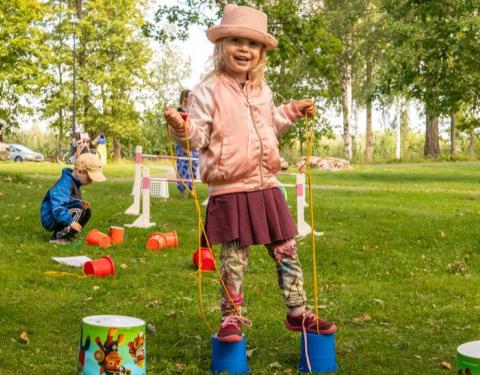The city of Tampere bought the former Metsä Board pulp mill complex. The first new jobs were created.
Hiedanranta


Smart and sustainable city district of the future
18 500
New residents
12
Minutes to city centre by tram
2025
Traffic on the tramline begun
2026
First homes
Main objectives for the new district
- future centre of Western Tampere
- sustainable and smart city district
- diverse living environment full of experiences
- future business environment
Hiedanranta is being developed together with
Hiedanranta development program
Hiedanranta is a strategic urban development project for the City of Tampere. The development program ensures the area is built according to the objectives. Hiedanranta is being developed into an internationally interesting, smart, sustainable and lively centre of the West. The develompent program is also working towards the know-how and operating models of smart and sustainable urban development
Juha-Antti Kaivonen
Director of Project DevelopmentHiedanrannan Kehitys Oy
Hiedanrannan Kehitys Oy owns the former industrial area and is in charge of its transformation into an attractive city district. The company is wholly owned by the City of Tampere and is a public limited company operating on market terms.
Click here for Contact information of Hiedanrannan Kehitys Oy
Creative Hiedanranta project
The development of the Hiedanranta cultural district and the planning of a cultural space cluster in the area are being furthered by the City of Tampere's Cultural Services Group. The development work is being carried out in cooperation with Hiedanrannan Kehitys Oy and art and cultural operators.
Click here to read more about Creative Hiedanranta
Tampere Tramway Ltd
Hiedanranta relies heavily on the tramway. The tram is running through Hiedanranta towards Lentäväniemi since early 2025, stopping at the Hiedanranta (city centre) and Tehdas stops.
A project plan for the Lielahti-Ylöjärvi section of the tramway will be drawn up between 2025 and 2027 in cooperation with the City of Tampere, the City of Ylöjärvi and Tampere Tramway Ltd. The plan has been decided by both the Tampere City Council on 9 December 2024 and the Ylöjärvi City Council on 16 December 2024.
ELY Centre and the Finnish Transport Infrastructure Agency
The implementation of the Hiedanranta project will also require traffic arrangements on roads 12 and 65, which are currently being planned. The aim is to make the busy Vaitinaro junction safer and smoother and to improve the quality of cycle routes.
Road plans (In Finnish): traffic management on the 12 and 65 motorways at Hiedanranta
Progress of the Hiedanranta development
The History of Hiedanranta

Explore Hiedanranta

Culture in Hiedanranta

Subscribe to the Hiedanranta newsletter!

Read more about planning

Procurement and tendering in Hiedanranta
No ongoing tenders.
Nollakuitu fibre waste removal in Lielahti
Nollakuitu fibre waste is wood material discharged by the forest industry in the area and stored in Lake Näsijärvi. In 2022-2023, the City of Tampere carried out a procurement procedure to find a company or a consortium of companies to carry out the removal of the fibre waste in the Hiedanranta-Niemenranta water area.
The aim is to improve the recreational use of the waterfront and water areas and to ensure a good environmental status. This will increase the water depth and thus significantly improve boating conditions. It will also significantly reduce the production of global warming methane. The surplus material left in the water by the forest industry will be used for energy production.
Fortum Waste Solutions Oy was selected as the contractor following a competitive tender.
Pilot operation in autumn 2023, permit applications in 2024
In 2023, Fortum carried out a trial operation in the Lielahti area of Lake Näsijärvi. During the trial phase, approximately 100 m3 of zero fibre pulp was dredged and processed in the trial operation area in Näsisaari. The experimental activities included sampling, gas and temperature measurements, sediment sampling, sounding of the area and drying experiments.
The experimental activities collected the necessary information for environmental permit applications and process design, and verified the quality of the virgin fibre for further use.
The necessary permits for the project have been applied for during 2024.
The Nollakuitu fibre waste process will involve a number of steps, the sizing and design of which will be further refined in the future, based on factors such as the areas and facilities available for the project and the permit requirements.
